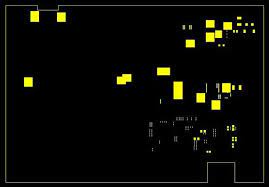
Support Team
Feedback:
support@nextpcb.comSolder Mask is essential process in the PCB Manufacturing. When you see a green coat applied atop your Printed Circuit Board, that is a solder mask.
Paste Mask adds solder paste on the printed circuit to allow firm fixing of the components.
Often at times, it needs to be clarified to note the difference between a Solder mask and a paste mask. This guide will detail the types, functions, and differences between these two processes.
Solder mask is usually applied in the final stages of Printed Circuit Board Manufacturing. During the PCB assembly process, the copper traces are exposed, thereby running the risk of oxidation and rust. Hence, the application of solder mask prolongs the circuit' board life cycle.
Also, it is usually a thin layer applied to the PCB's copper traces, traditionally made of polymer, to prevent oxidation, rust, and dirt when exposed to the environment. It is essentially the sheet that covers the whole PCB giving it a shiny appearance.
Here are the following functions that solder masks offer to Printed Circuit Boards.
There are varied kinds of solder Masks available in PCB manufacturing. However, PCB Manufacturers make use of four significant types. They include the following:
Suppose you are new to PCB Manufacturing. In that case, it is vital to consider the differences in types and see how you can apply them. Let's explain them briefly so you can discern these types and see which you can use for your Printed Circuit Board.
This kind of Solder mask is the cheapest kind available in the market. Epoxy is applied on the PCB board through Silkscreen. Silkscreen allows ink to be transferred to the open areas on the circuit board.
PCB manufacturers employ this solder mask to identify the kind applied to the top and bottom of the Printed Circuit Board. It is usually made of epoxy.
Usually called LPSM, it comes from ink formulation using a liquid solder resist. The LPSM process is often sprayed over the surface, which is faster and cheaper. Upon completion of the LPSM process, the circuit is cleaned to ensure no dirt or dust is trapped in the hardened solder resist.
The DFSM is pretty similar to the LPSM. However, the dry film is applied using a vacuum lamination process instead of liquid solder resist. It ensures that no bubbles are trapped under the film.
When the dry film is exposed and fully developed, the circuit board creates a pattern for easy fixing and soldering the PCB components onto the circuit board.

Paste masks are stencils which have hole openings for easy deposition of solder paste[/caption]
PCB paste mask refers to the technique or patterns applied on the Printed Circuit Board. They are stencils applied during PCB assembly with punched holes corresponding to the solder points on the printed Circuit Board.
Stencils allow solder paste to be easily applied on the circuit boards, enabling essential components to fix on the PCB. Hence, the paste masks' size must equal that of the Printed Circuit Boards.
A solder paste layer is used to determine the exposed copper on the bare Printed Circuit Board and is in Gerber files. A solder paste layer is called a stencil file. The stencil file is one for a single-layer printed circuit board. For a double-sided circuit board, it needs two stencil files.
The Top and Bottom Paste Masks are the two kinds of Past masks or Stencils in the PCB industry. Let's consider the difference between them.
This Paste mask is found on the top side part of the printed circuit board. Top Paste Mask is also known as the component side. Surface Mount Technology (SMT) employs this Paste Mask, where the components are fixed on the circuit board.
The bottom Paste mask is found on the bottom side of the printed circuit board. It is also known as the solder side. Through-Hole Technology (THT) utilizes it, where components have leads that permanently attach to the circuit board longer.
Here are some essential differences between Solder Mask and Paste Mask on Printed Circuit Board:
Solder Mask are applied during PCB Manufacturing, preventing oxidation, rust, and dirt on your circuit board. However, Paste Masks are employed in PCB Assembly, which applies solder pastes on the circuit board to ensure permanent fixing of components on the circuit board.
The solder and paste masks are essential to ensure printed circuit boards' longevity. Take note of these applications when you send your PCB designs to your PCB Manufacturer.
However, NextPCB ensures no compromise on your circuit boards by applying solder and paste masks during PCB Manufacturing and Assembly process. Consider it your final stop for your PCB solutions as NextPCB engages you in a quality PCB service that brings your PCB designs to life.
Still, need help? Contact Us: support@nextpcb.com
Need a PCB or PCBA quote? Quote now